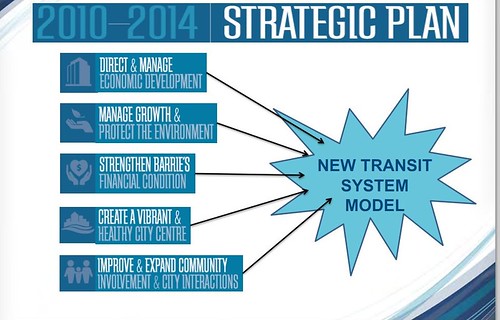Unstrategy for economic development in DC
 Image: Washington Redskins quarterback Rex Grossman, left, scrambles out of the reach of Philadelphia Eagles defensive end Darryl Tapp during the first half of an NFL football game in Landover, Md., Sunday, Oct. 16, 2011. Photo: Pablo Martinez Monsivais / AP
Image: Washington Redskins quarterback Rex Grossman, left, scrambles out of the reach of Philadelphia Eagles defensive end Darryl Tapp during the first half of an NFL football game in Landover, Md., Sunday, Oct. 16, 2011. Photo: Pablo Martinez Monsivais / APBarrie, Ontario, a city with about 130,000 residents of the metropolitan area's 180,000 residents has a strategic plan.
The DC local government--DC is the national capital, has about 600,000 residents, is part of a metropolitan area with 8.5 million residents, is the center of the region's heavy rail transit system, is still one of the world's strongest commercial real estate markets (although it is softening), and has an $8+ billion budget--does not have a four year strategic plan comparable to that developed by the City of Barrie.
From the first article:
What were Mayor Vincent C. Gray, and D.C. Council members Jack Evans and Michael Brown doing at Ronald Reagan Washington National Airport on Friday?
The trio was headed south to get a behind-the-scenes look of the Tampa Bay Buccaneers' headquarters and practice facilities.
And why, might fans ask, do D.C. officials have the slightest bit of curiosity about the Bucs, who are not on the 'Skins regular-season schedule?
Well, the Bucs' facilities — among the largest in the NFL with three full-length grass practice fields perched on 33 acres of land — and Washington is economically and socially jealous.
In other words, city officials appear to be finally getting their ducks in a row to lure the Washington Redskins back to, well, Washington.
This is so economically ridiculous that I can't think straight. Apparently the idea is to use a bunch of land in "Reservation 13," the large tract of land somewhat adjacent to the RFK Stadium Complex and on the edge of Capitol Hill.
-- "Hill East home to beefed-up detox clinic, stalled redevelopment plans," Washington Business Journal, November 2010
The City developed a master plan for the site and put out development rights for bid, but with the 2008 real estate depression, plans for the site--like Poplar Point in Anacostia, the Armed Forces Retirement Home, previous plans to create the "Arboretum Place" development along New York Avenue NE, the Skyland shopping center redevelopment etc.--have ground to a halt.
Officials in Albert's office, which now handles AWC projects, said they plan to largely stick to the AWC plan for the area, but rather than divvying individual parcels will seek a master developer to drive the project.
Apparently--albeit without a plan--the Mayor thinks that giving the Redskins football team 20 to 30 free acres of land for a football practice facility that would generate relatively little tax revenue is economic development.
Some time ago, I reprinted a slide from a presentation to the Sarasota County, Florida Board of Commissioners, which showed the tax revenues received from an acre of land depending on the type and intensity of the development.

This slide is not fully applicable to Washington, DC, because DC also reaps 100% of the income tax revenues from citizens, which isn't the case for other local jurisdictions anywhere else in the country, but still you get the idea.

Intensive and mixed use of land pays off a lot better than would a practice facility for a professional sports team, especially when it is likely that most of the team's personnel (owners, managers and staff, and players) won't live in the city and therefore won't generate tax revenues.
Labels: building a local economy, economic development, electoral politics and influence, public finance and spending, sports and economic development, urban revitalization






0 Comments:
Post a Comment
<< Home